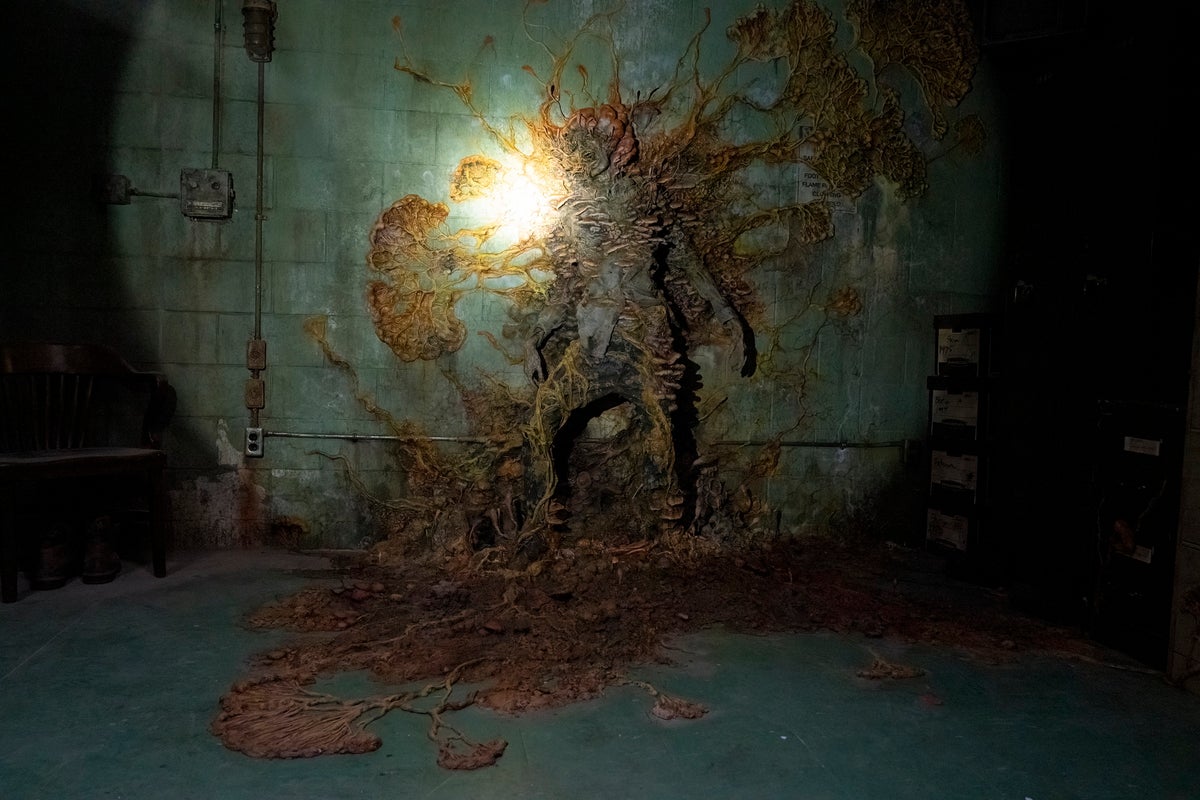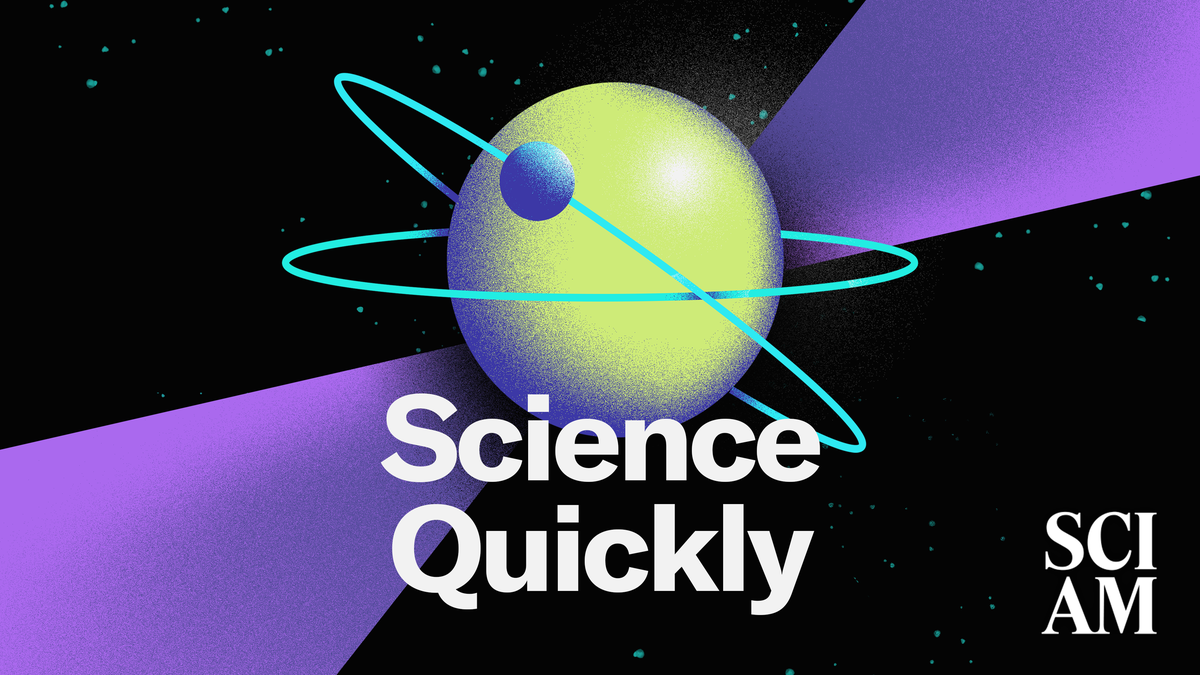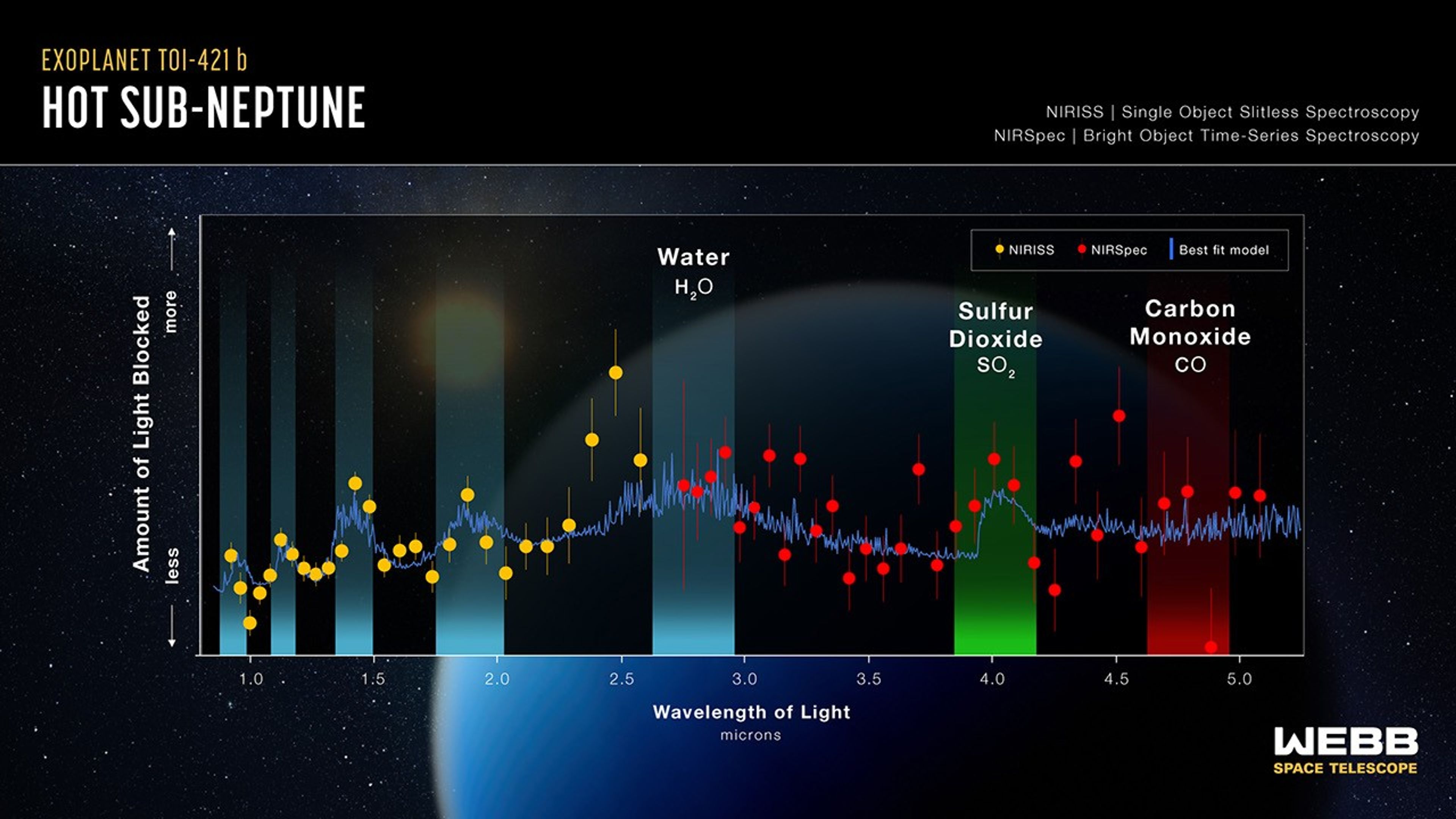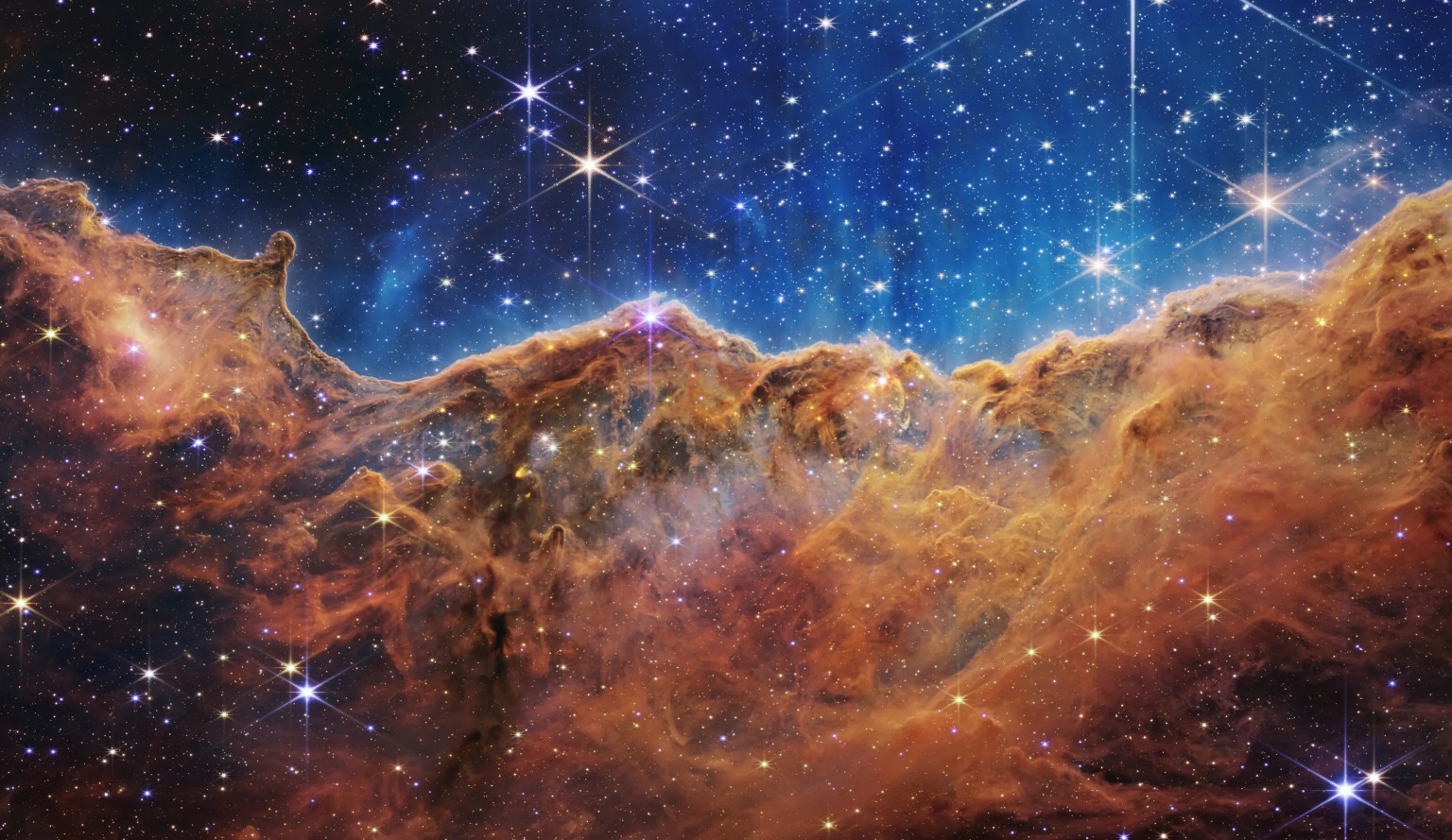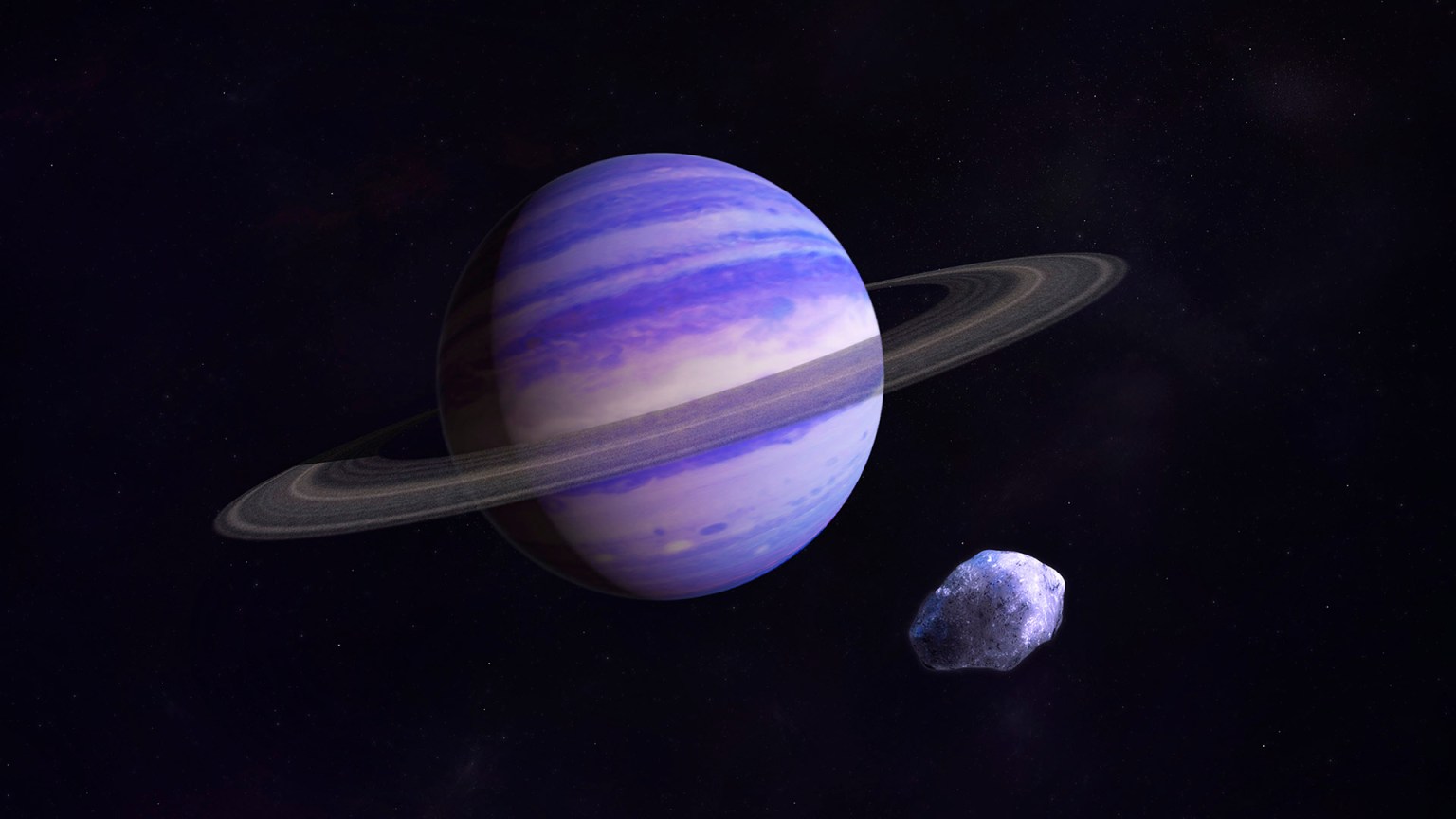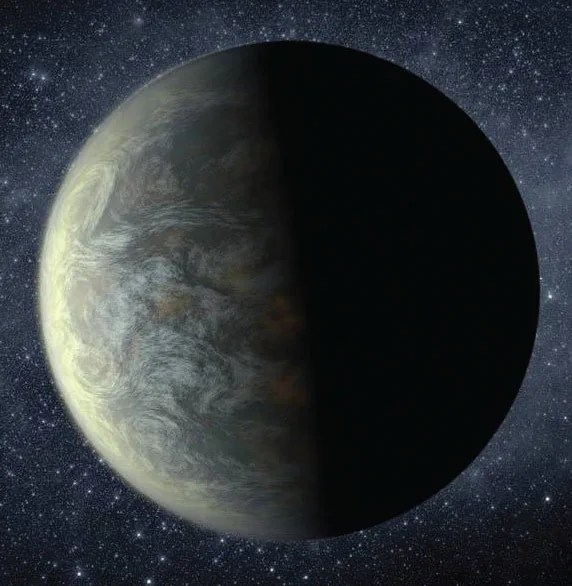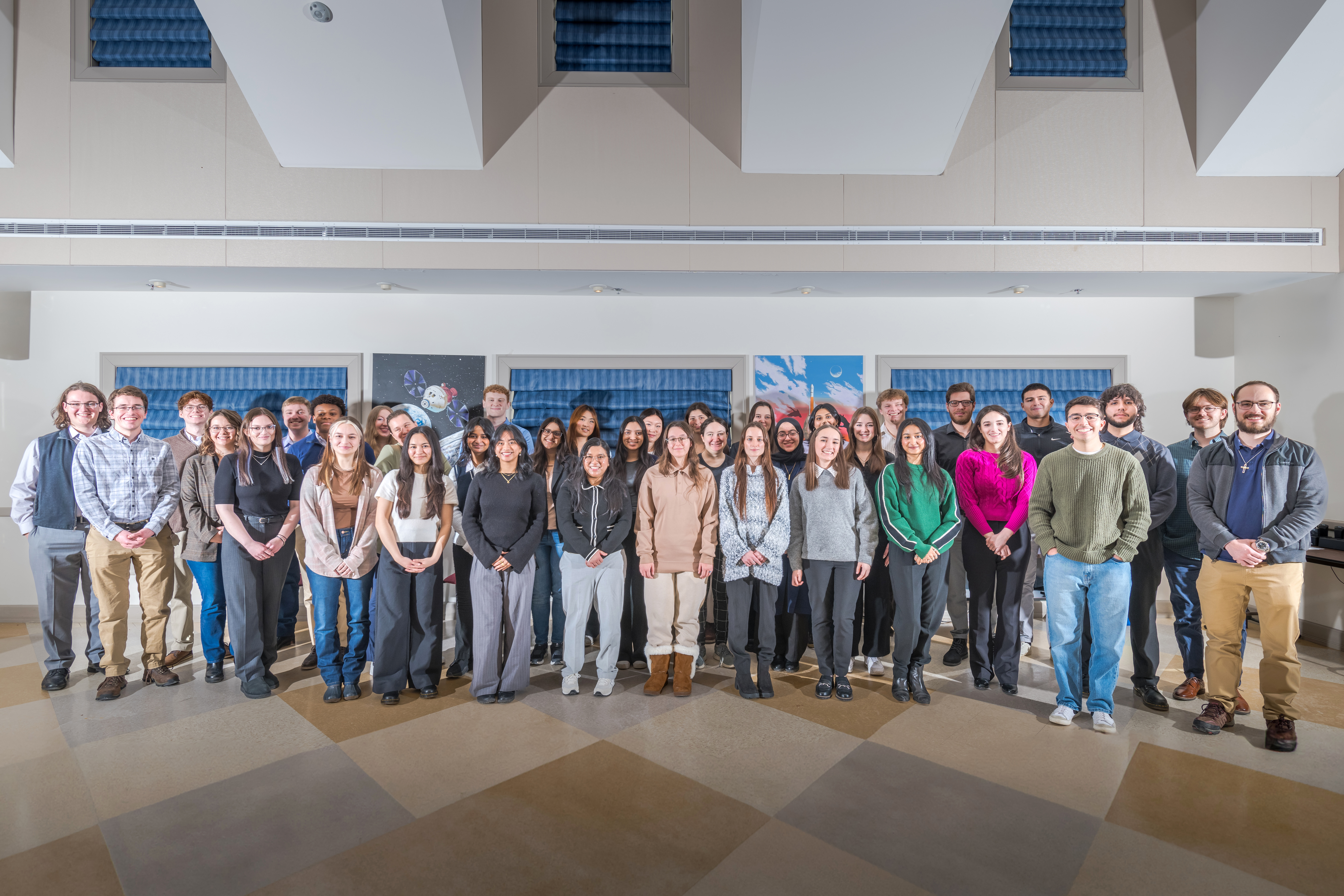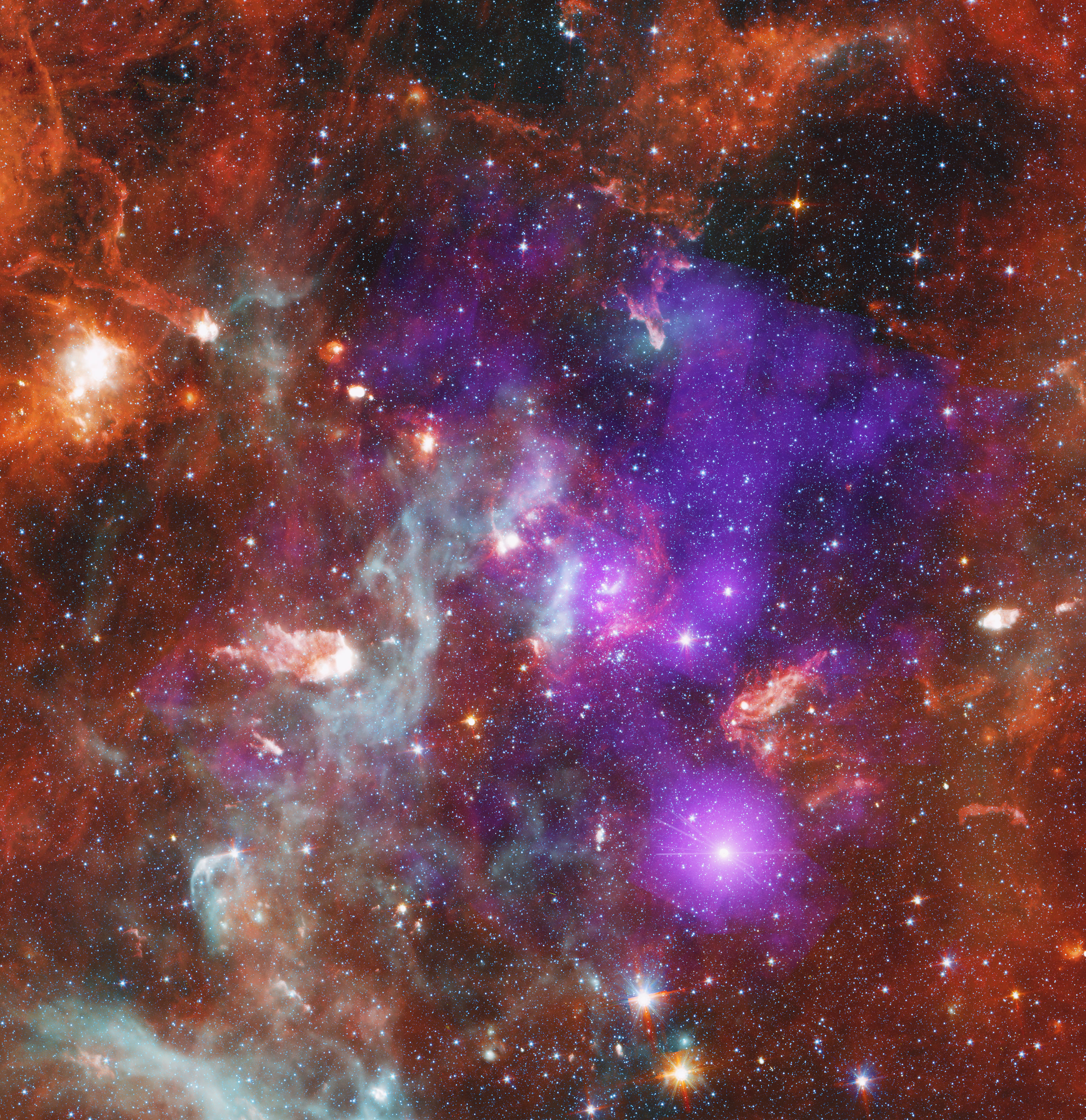NASA’s Webb Lifts Veil on Common but Mysterious Type of Exoplanet
Though they don’t orbit around our Sun, sub-Neptunes are the most common type of exoplanet, or planet outside our solar system, that have been observed in our galaxy. These small, gassy planets are shrouded in mystery…and often, a lot of haze. Now, by observing exoplanet TOI-421 b, NASA’s James Webb Space Telescope is helping scientists […]

NASA’s Webb Lifts Veil on Common but Mysterious Type of Exoplanet
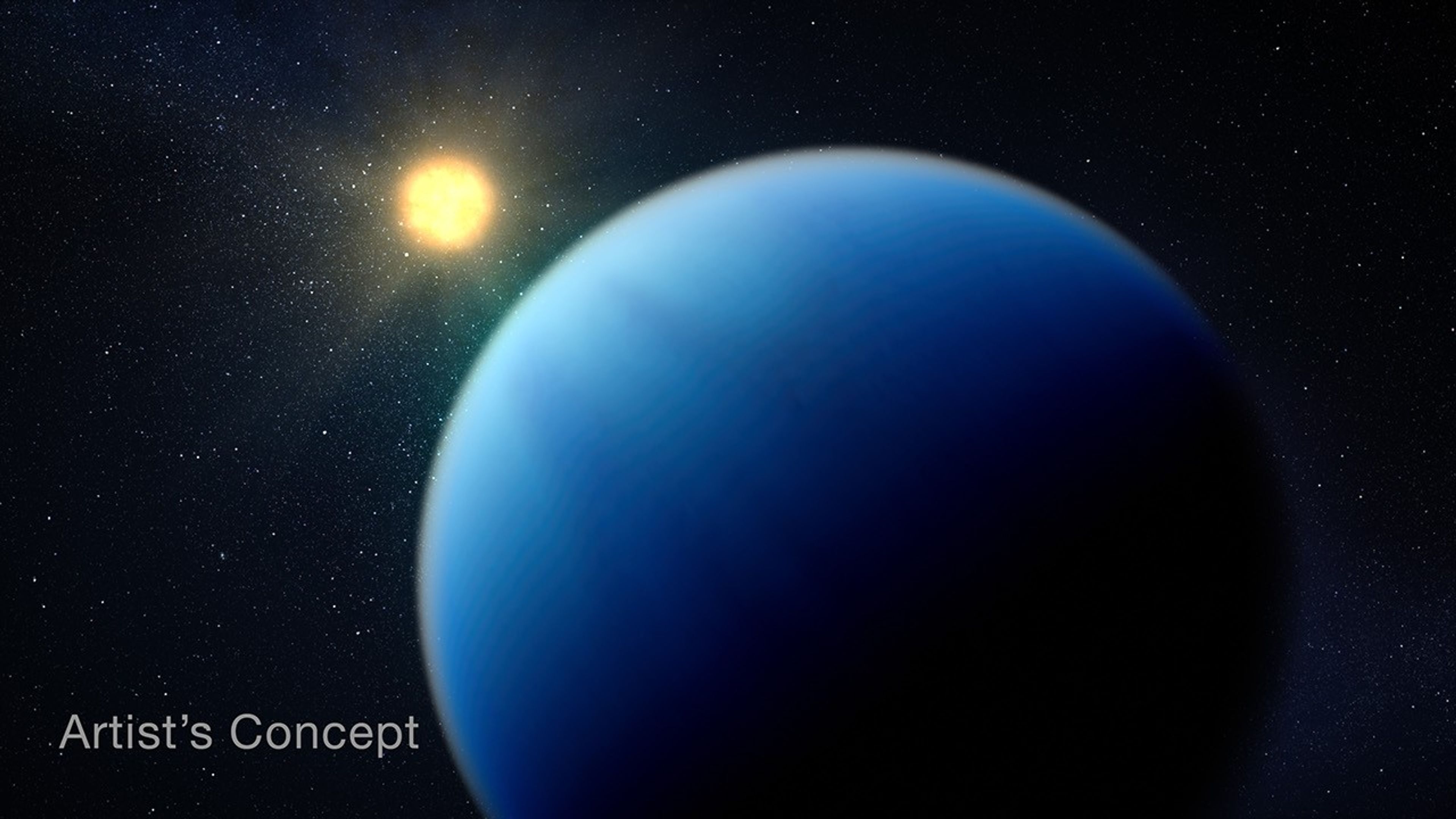
Illustration: NASA, ESA, CSA, Dani Player (STScI)
Though they don’t orbit around our Sun, sub-Neptunes are the most common type of exoplanet, or planet outside our solar system, that have been observed in our galaxy. These small, gassy planets are shrouded in mystery…and often, a lot of haze. Now, by observing exoplanet TOI-421 b, NASA’s James Webb Space Telescope is helping scientists understand sub-Neptunes in a way that was not possible prior to the telescope’s launch.
“I had been waiting my entire career for Webb so that we could meaningfully characterize the atmospheres of these smaller planets,” said principal investigator Eliza Kempton of the University of Maryland, College Park. “By studying their atmospheres, we’re getting a better understanding of how sub-Neptunes formed and evolved, and part of that is understanding why they don’t exist in our solar system.”
Image A: Artist’s Concept of TOI-421 b
Small, Cool, Shrouded in Haze
The existence of sub-Neptunes was unexpected before they were discovered by NASA’s retired Kepler space telescope in the last decade. Now, astronomers are trying to understand where these planets came from and why are they so common.
Before Webb, scientists had very little information on them. While sub-Neptunes are a few times larger than Earth, they are still much smaller than gas-giant planets and typically cooler than hot Jupiters, making them much more challenging to observe than their gas-giant counterparts.
A key finding prior to Webb was that most sub-Neptune atmospheres had flat or featureless transmission spectra. This means that when scientists observed the spectrum of the planet as it passed in front of its host star, instead of seeing spectral features – the chemical fingerprints that would reveal the composition of the atmosphere – they saw only a flat-line spectrum. Astronomers concluded from all of those flat-line spectra that at least certain sub-Neptunes were probably very highly obscured by either clouds or hazes.
Image B: Spectrum of TOI-421 b
A Different Kind of Sub-Neptune?
“Why did we observe this planet, TOI-421 b? It’s because we thought that maybe it wouldn’t have hazes,” said Kempton. “And the reason is that there were some previous data that implied that maybe planets over a certain temperature range were less enshrouded by haze or clouds than others.”
That temperature threshold is about 1,070 degrees Fahrenheit. Below that, scientists hypothesized that a complex set of photochemical reactions would occur between sunlight and methane gas, and that would trigger the haze. But hotter planets shouldn’t have methane and therefore perhaps shouldn’t have haze.
The temperature of TOI-421 b is about 1,340 degrees Fahrenheit, well above the presumed threshold. Without haze or clouds, researchers expected to see a clear atmosphere – and they did!
A Surprising Finding
“We saw spectral features that we attribute to various gases, and that allowed us to determine the composition of the atmosphere,” said the University of Maryland’s Brian Davenport, a third-year Ph.D. student who conducted the primary data analysis. “Whereas with many of the other sub-Neptunes that had been previously observed, we know their atmospheres are made of something, but they’re being blocked by haze.”
The team found water vapor in the planet’s atmosphere, as well as tentative signatures of carbon monoxide and sulfur dioxide. Then there are molecules they didn’t detect, such as methane and carbon dioxide. From the data, they can also infer that a large amount of hydrogen is in TOI-421 b’s atmosphere.
The lightweight hydrogen atmosphere was the big surprise to the researchers. “We had recently wrapped our mind around the idea that those first few sub-Neptunes observed by Webb had heavy-molecule atmospheres, so that had become our expectation, and then we found the opposite,” said Kempton. This suggests TOI-421 b may have formed and evolved differently from the cooler sub-Neptunes observed previously.
Is TOI-421 b Unique?
The hydrogen-dominated atmosphere is also interesting because it mimics the composition of TOI-421 b’s host star. “If you just took the same gas that made the host star, plopped it on top of a planet’s atmosphere, and put it at the much cooler temperature of this planet, you would get the same combination of gases. That process is more in line with the giant planets in our solar system, and it is different from other sub-Neptunes that have been observed with Webb so far,” said Kempton.
Aside from being hotter than other sub-Neptunes previously observed with Webb, TOI-421 b orbits a Sun-like star. Most of the other sub-Neptunes that have been observed so far orbit smaller, cooler stars called red dwarfs.
Is TOI-421b emblematic of hot sub-Neptunes orbiting Sun-like stars, or is it just that exoplanets are very diverse? To find out, the researchers would like to observe more hot sub-Neptunes to determine if this is a unique case or a broader trend. They hope to gain insights into the formation and evolution of these common exoplanets.
“We’ve unlocked a new way to look at these sub-Neptunes,” said Davenport. “These high-temperature planets are amenable to characterization. So by looking at sub-Neptunes of this temperature, we’re perhaps more likely to accelerate our ability to learn about these planets.”
The team’s findings appear on May 5 in the Astrophysical Journal Letters.
The James Webb Space Telescope is the world’s premier space science observatory. Webb is solving mysteries in our solar system, looking beyond to distant worlds around other stars, and probing the mysterious structures and origins of our universe and our place in it. Webb is an international program led by NASA with its partners, ESA (European Space Agency) and CSA (Canadian Space Agency).
To learn more about Webb, visit:
Downloads
Click any image to open a larger version.
View/Download all image products at all resolutions for this article from the Space Telescope Science Institute.
Media Contacts
Laura Betz – laura.e.betz@nasa.gov
NASA’s Goddard Space Flight Center, Greenbelt, Md.
Ann Jenkins – jenkins@stsci.edu
Space Telescope Science Institute, Baltimore, Md.
Hannah Braun – hbraun@stsci.edu
Space Telescope Science Institute, Baltimore, Md.
Related Information
Webb Blog: Reconnaissance of Potentially Habitable Worlds with NASA’s Webb
Video: How to Study Exoplanets
Article: Webb’s Impact on Exoplanet Research
Video: How do we learn about a planet’s Atmosphere?
Learn more about exoplanets
Related For Kids
En Español
Share
Related Terms
What's Your Reaction?

















